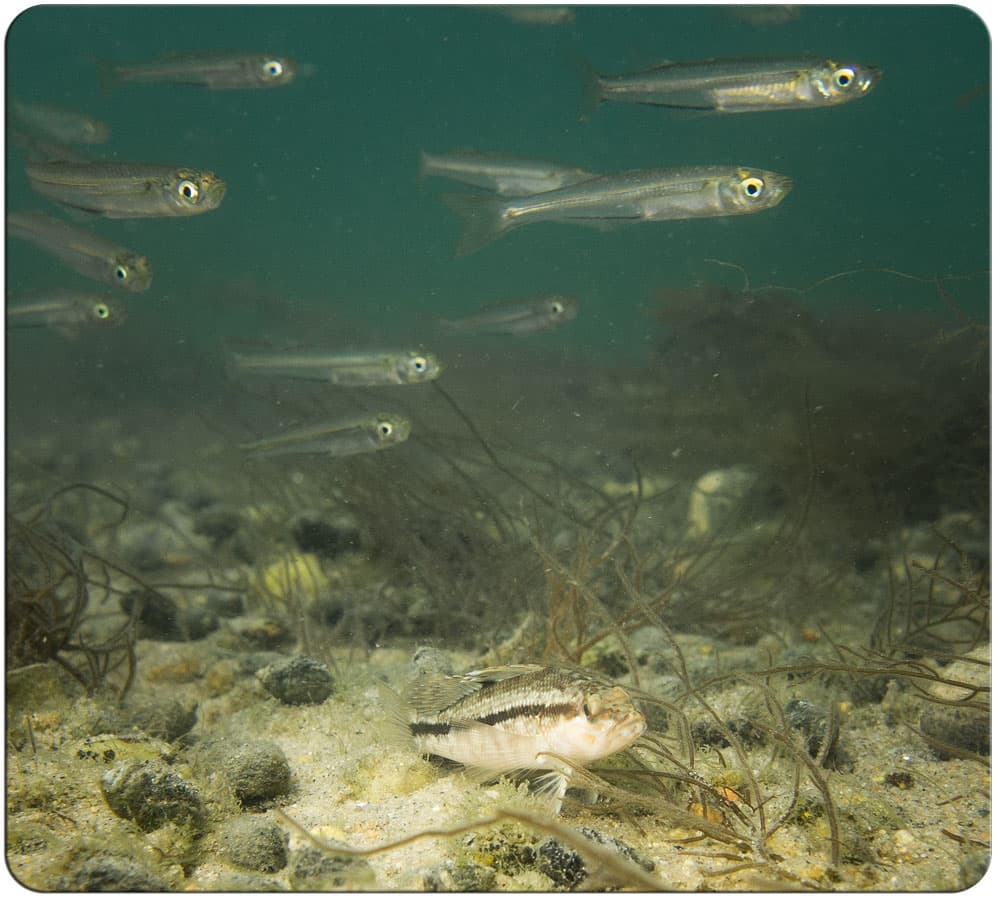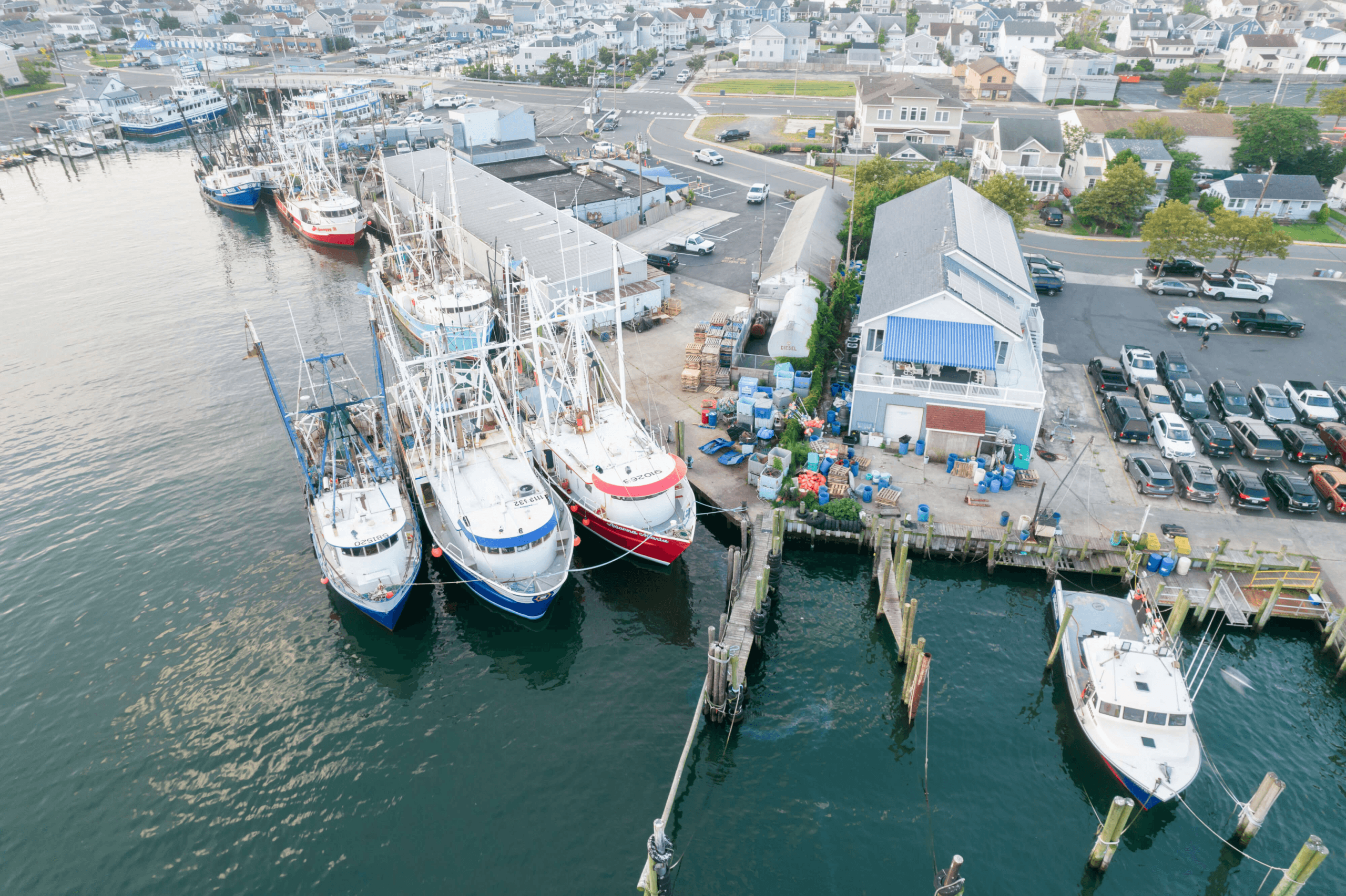Finfish
Finfish (any fish with a fin versus a shell) are a diverse group of fish species essential for marine ecosystems and a vital resource for global fisheries and aquaculture.

Studying Mid-Atlantic Finfish

Study advances include:
- Using variable CO2 typical of inshore and estuarine waters
- Estimating the effects of simultaneously acting environmental stressors, such as low dissolved oxygen (DO), elevated temperatures, and contaminants typical of inshore waters
- Assessing the degree to which young fish can survive and function normally when exposed to these stressors and evaluating whether existing genetic variation exists that might allow adaptation to future high-CO2 conditions.
The kinds of complexities revealed in these studies underscore species differences as well as provide evidence that stocks within a species may differ in their responses to acidification.

Several laboratory studies have been conducted on summer flounder. After exposure to elevated levels of CO2, researchers found summer flounder egg fertilization rate to be lower and, among those that were successfully fertilized, fewer survived to hatching. For larvae, rates of growth and development were accelerated but larval survival was unaffected. In nature, a consequence of accelerated development would be young juvenile summer flounder arriving in bay waters earlier in the season and at smaller sizes than historically normal.
These altered features in size and timing of early life events could heighten the risks of death due to consumption by predators or prolonged exposure to the cold inshore waters typical of winter in coastal Mid-Atlantic fish nurseries. Older summer flounder juveniles also showed increased mortality when subjected to highly variable CO2 and DO conditions.

Flatfish - Winter Flounder
The responses of winter flounder to elevated levels of CO2 differ from that reported for summer flounder. Among other findings, winter flounder fertilization rates increased with increasing CO2 to a point, then decreased at the highest CO2 levels (most acidic) tested. The fertilization rates decreased with elevated temperatures. Interestingly, the fertilization rate response of New Jersey winter flounder differed from flounder collected in Massachusetts/Southern Gulf of Maine waters in that Massachusetts fish displayed increased fertilization rates at even the most acidic waters but were more sensitive than New Jersey fish to warmer temperatures.

Weakfish
Juvenile weakfish exposed to short-term (30 day) exposures to constant and fluctuating CO2 and DO levels showed negative effects only at the highest level of variability in water chemistry. They appeared to be robust when faced with current-day and projected future CO2 conditions in nursery habitats.

Forage Fish
Forage fish, including Atlantic silverside, inland silverside, and sheepshead minnow, are key players in the Mid-Atlantic food web and face significant risks from elevated CO2 and combined stressors like low dissolved oxygen (DO) and high temperatures. These species typically spawn in the subtidal zones of estuaries, exposing adults and offspring to extreme daily variability in CO2, DO, and summer heat.
High acidification CO2 has led to increased embryo mortality, altered hatching timing and sizes, and reduced larval growth rates. Adults may also face direct mortality from elevated CO2 and low DO, as well as increased predation risk under these combined stressors. Research on parent-offspring relationships reveals that offspring from summer-spawning parents, who experience warmer, more acidic, and lower-oxygen conditions, are more resilient to acidification.
Additionally, offspring resilience varies significantly between families, suggesting potential for these species to adapt to future CO2 conditions.

